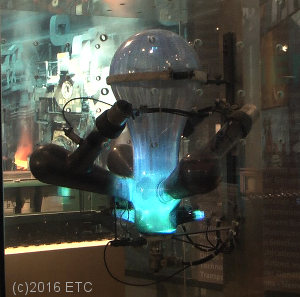Measuring high levels of AC and DC voltage presented a problem for early pioneers of electric utilities. As the power service areas expanded, the voltages needed to travel over distances increased. Measuring such powerful systems became quite a task!
Early methods to measure high voltage include:
Needle Gap
The Sphere Gap
Electroscope
Prior to 1916 high voltage measurement was described as: “Direct measurement of high-tension voltage with the electrostatic voltmeter and derivation of high-tension voltage from the primary voltage, from auxiliary ratio transformer, from tertiary coil placed in the transformer or from section taps on the secondary winding have been the most common methods used.” – L.W. Chubb

Basically what he was saying is that they used to figure out that a given voltage could create an arc through the air at a given distance. This method was not accurate because air humidity and pressure effects how far an arc can travel.
Another method involved the arc discharge through gas tube such as a mercury arc rectifier to measure plasma energy. Having the arc contained in the glass vessel controlled the environment so the arc was more predictable (and safe!). No matter how you do it creating a high voltage arc creates electromagnetic noise and other problems so this method wasn’t a great solution.
The need to measure the seemingly “unmeasurable” led to the development of non-magnetic means: the electrostatic meter in our next section. Today we use Current Transformers and Potential Transformers to grab a sample of the high voltage, but we will cover that a little later.
Sources are located on the credits page.
